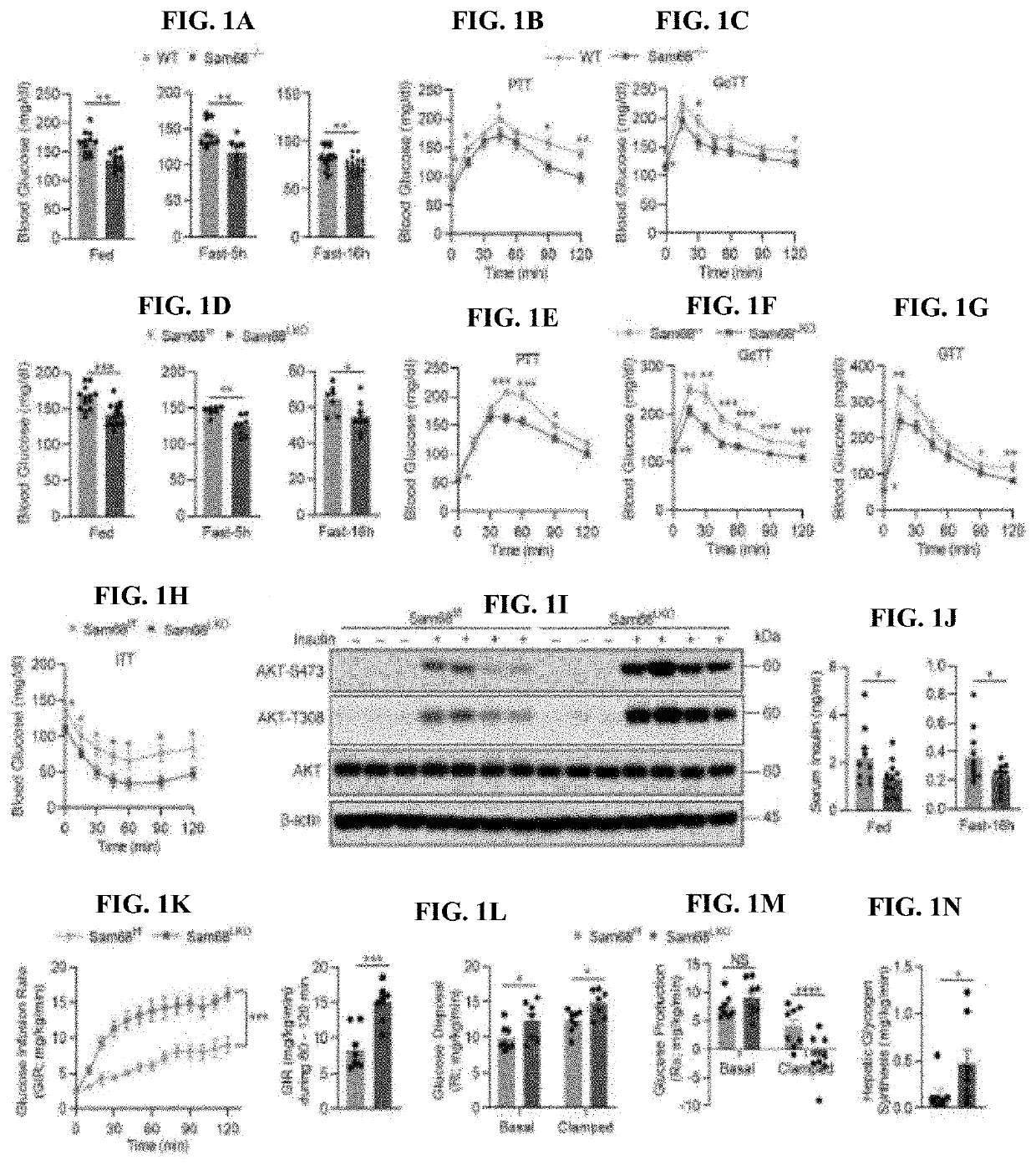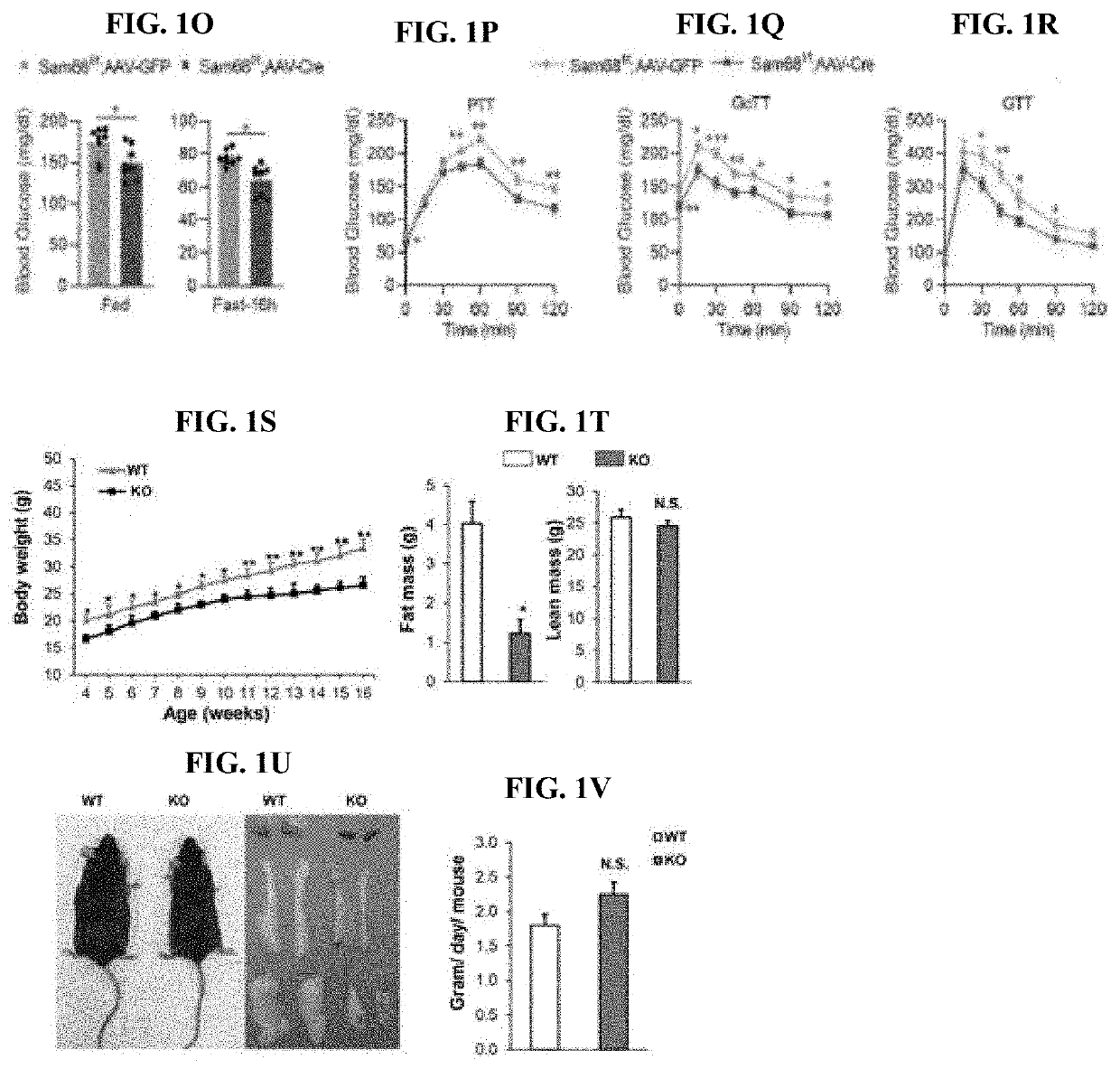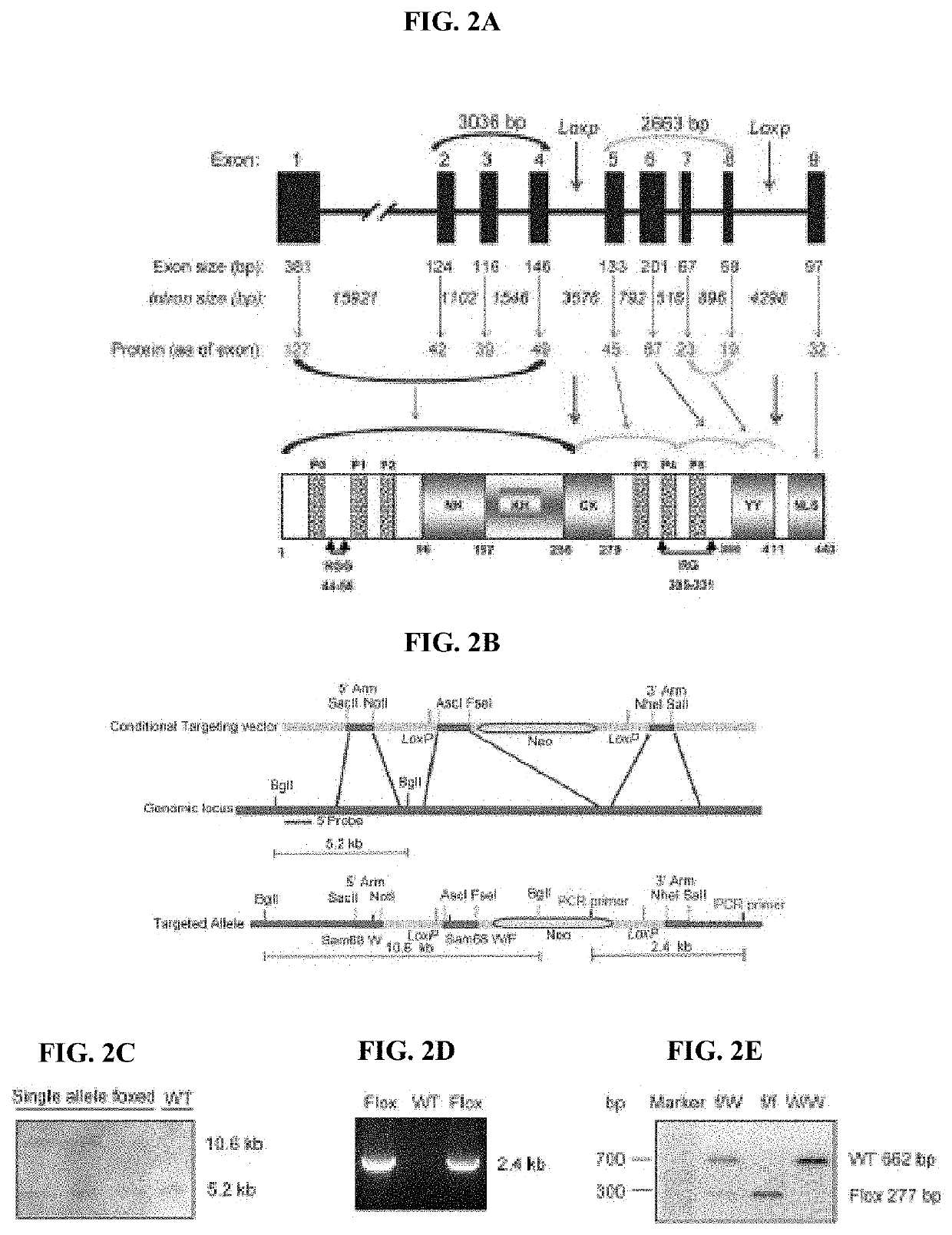Compositions and methods for treatment of diabetes, obesity, hyper-cholesterolemia, and atherosclerosis by inhibition of sam68
- Summary
- Abstract
- Description
- Claims
- Application Information
AI Technical Summary
Benefits of technology
Problems solved by technology
Method used
Image
Examples
example 1
ulates Blood Glucose Homeostasis by Promoting Hepatic Gluconeogenesis
[0092]Blood-glucose levels in Sam68− / − mice and their matched WT littermates were compared. Glucose levels were significantly lower in Sam68− / − mice under both feeding and fasting conditions (FIG. 1A), as well as in the pyruvate-tolerance (FIG. 1B) and glucagon-tolerance (FIG. 1C) tests (PTT and GcTT, respectively), both of which measure gluconeogenesis. Since gluconeogenesis occurs primarily in the liver, hepatocyte-specific Sam68 knockout)(Sam68LKO) mice were generated (FIGS. 2A-2E), confirmed that Sam68 protein levels declined in the liver but not in other organs (FIG. 2F), and then repeated Applicants' assessments: blood glucose levels were significantly lower in Sam68LKO mice than in their littermates with normal Sam68 expression (Sam68f / f mice), whether the animals were fed or fasted (FIG. 1D), and when evaluated in the PTT (FIG. 1E) and GcTT (FIG. 1F). Hepatic Sam68 deficiency was also associated with lower ...
example 2
of Sam68 in Mice Protects Against Diet-Induced Obesity
[0094]The body weight and composition in Sam68− / − mice and their WT littermates were measured. Sam68− / − mice display a significantly reduced body weight and fat mass with the difference explained entirely by decreased adiposity, as lean mass is normal (FIGS. 1S-1T). Further analyses show that BAT, inguinal and epididymal depots are smaller in Sam68 mice (FIG. 1U), The effect on adiposity is not mediated by food intake, which did not differ between the two genotypes (FIG. 1V).
example 3
motes Hepatic Gluconeogenesis by Altering Glucagon and Insulin Signaling Balance
[0095]To investigate the molecular mechanism by which Sam68 promotes hepatic gluconeogenesis, mouse liver tissues were examined for the expression of key gluconeogenic genes. Both mRNA (FIG. 3A) and protein (FIG. 3B) levels of PGC-1□, PEPCK, and G6Pase were dramatically lower in Sam68LKO mice than in Sam68f / f mice under feeding and fasting conditions. Furthermore, when primary hepatocytes were isolated from Sam68− / − and WT mice and then treated with glucagon, the Sam68 deletion was associated with significantly lower measures of glucose production (FIG. 3C), and the expression of all three gluconeogenic genes was significantly less upregulated (FIG. 3D, FIG. 4) in Sam68− / − hepatocytes than in WT hepatocytes, with the difference between the two cell populations generally increasing in a time- and glucagon-dose-dependent manner. Notably, Sam68 is an RNA-binding protein, which suggests that it could influen...
PUM
 Login to View More
Login to View More Abstract
Description
Claims
Application Information
 Login to View More
Login to View More - R&D
- Intellectual Property
- Life Sciences
- Materials
- Tech Scout
- Unparalleled Data Quality
- Higher Quality Content
- 60% Fewer Hallucinations
Browse by: Latest US Patents, China's latest patents, Technical Efficacy Thesaurus, Application Domain, Technology Topic, Popular Technical Reports.
© 2025 PatSnap. All rights reserved.Legal|Privacy policy|Modern Slavery Act Transparency Statement|Sitemap|About US| Contact US: help@patsnap.com



